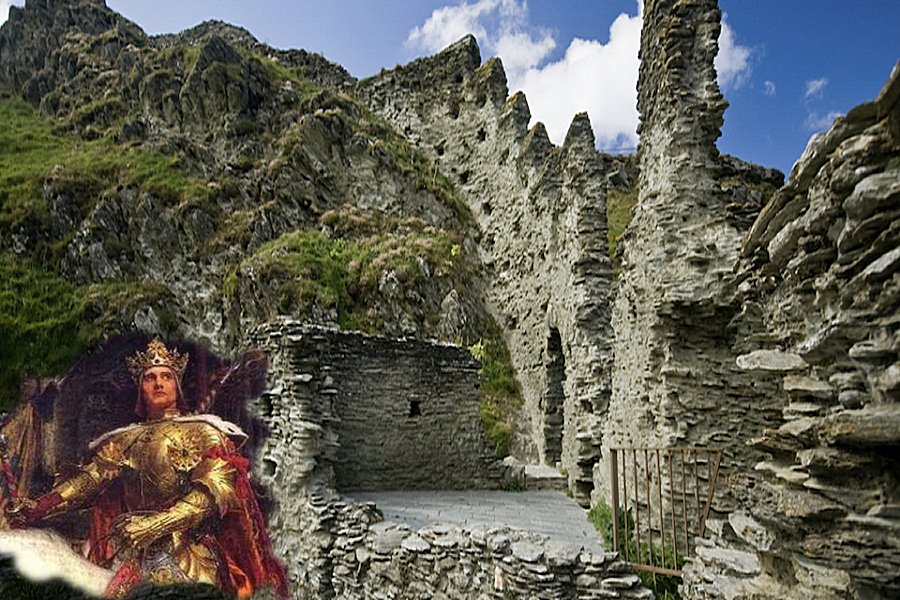Was Tintagel Castle A Fortress Used By Iconic Hero King Arthur?
A. Sutherland - AncientPages.com - Ancient Tintagel Castle has quite spectacular natural topography, particularly the eroded neck of land dividing the island from the mainland.
Located on both sides of the chasm, the Castle experienced centuries-long erosion.
It practically 'consumed' many parts of it along with earlier buildings. Split in two by the force of the sea and ruined, the Tintagel Castle was once the fortress used by King Arthur.
Iconic hero King Arthur was first linked to Tintagel in the 12th century when Geoffrey of Monmouth named it the place where Arthur was conceived.
One legend is that the infant Arthur, probably of mixed Roman and British parentage, was thrown by the waves on the beach by Merlin's cave. He is identified with the known history of a Celtic chieftain of the 5th century, a great warrior who led his fellow citizens in the West in their resistance against Saxon invaders.
The marriage of Arthur and Guinevere. Image credit: Speed Lancelot (1860-1931) - Scan of illustration at title page in a book of The Legends of King Arthur and His Knights (Facing p. 78), 1912., 9th edition. Ed. Sir James Knowles, K. C. V. O. London; New York: Frederick Warne and Co., 1912 - Public Domain
The original fortress is long gone, but archaeologists have found proof in their diggings on the Tintagel Castle that fifth-century citizens lived on the site.
The replacement castle was built between 1230 and 1236 and is now nearly 800 years old. The Castle was in ruins within two hundred years and remains so.
There is something special about Tintagel. Its associations with the legendary King Arthur date back to the twelfth century.
This iconic hero was for the first time linked to Tintagel by Geoffrey of Monmouth, the medieval author of "History of the Kings of Britain," who, in the story "Once and Future King," confirms it as the place where Arthur was conceived with the help of Merlin.
Geoffrey places the event at Tintagel Castle, which was said to be the home of the Duke of Cornwall, Gorlois, and his enchanting wife, Ygerna. Some 700 years later, the great Victorian poet laureate, Alfred Lord Tennyson, in "Idylls of the King," begins his story of Arthur at Tintagel.
Was it just a coincidence? Why did the authors choose this particular place for their stories? Were they inspired by an ancient oral or written tradition that associated Arthur with Tintagel?
Geoffrey of Monmouth's History of the Kings of Britain contains the earliest written mention of Tintagel. The tale tells how Arthur was conceived there by Uther Pendragon, King of Britain, because of his magically assisted seduction of Queen Igerna (Igraine), wife of Duke Gorlois of Cornwall.
Enigmatic Tintagel Castle is a very ancient place; its visible ruins date back to the 13th century, but according to archaeological excavations, there were other older ruins on this site.
Dr. C.A. Ralegh Radford (1900- 1999) excavated the site in the 1930s. He believed that the earlier Tintagel was a Celtic monastery dating back to around the fifth century, the supposed time of Arthur.
Further excavations in the 1990s have shown that it was not a monastic site but the stronghold of a powerful, dark-age chieftain.
Who was the mysterious man?
Written by – A. Sutherland AncientPages.com Staff Writer
Copyright © AncientPages.com All rights reserved. This material may not be published, broadcast, rewritten or redistributed in whole or part without the express written permission of AncientPages.com
Expand for referencesMore From Ancient Pages
-
 Modern Humans Traveled Across The Eurasian Steppe 45,000 Years Ago
Archaeology | Aug 20, 2019
Modern Humans Traveled Across The Eurasian Steppe 45,000 Years Ago
Archaeology | Aug 20, 2019 -
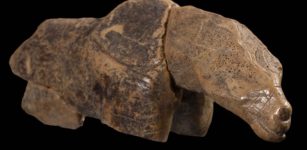 Curious Ice Age Figurine Of Unidentified Animal Species Puzzles Scientists
Archaeology | Jul 31, 2023
Curious Ice Age Figurine Of Unidentified Animal Species Puzzles Scientists
Archaeology | Jul 31, 2023 -
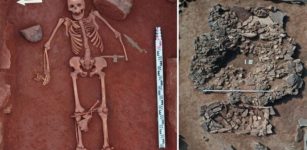 2,500-Year-Old Large Untouched Scythian Burial Ground Unearthed In Khakassia, Siberia
Archaeology | Oct 6, 2020
2,500-Year-Old Large Untouched Scythian Burial Ground Unearthed In Khakassia, Siberia
Archaeology | Oct 6, 2020 -
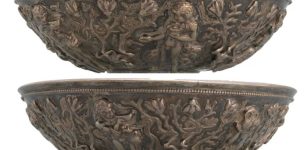 Surprising Discovery Reveals Ancient Tibetan Bowl Shows Alexander The Great – The Jewish Version And Not The Homer’s Iliad
Archaeology | Apr 28, 2022
Surprising Discovery Reveals Ancient Tibetan Bowl Shows Alexander The Great – The Jewish Version And Not The Homer’s Iliad
Archaeology | Apr 28, 2022 -
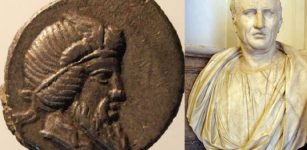 Scientists Solve The Mystery Of Cicero’s Puzzling Words By Analyzing Ancient Roman Coins – Evidence Of Financial Crisis?
Artifacts | Apr 6, 2022
Scientists Solve The Mystery Of Cicero’s Puzzling Words By Analyzing Ancient Roman Coins – Evidence Of Financial Crisis?
Artifacts | Apr 6, 2022 -
 Startling Discovery Of Nubian Levallois Technology In Shukbah Cave Re-Writes Ancient History Of Neanderthals And Homo Sapiens
Archaeology | Feb 24, 2021
Startling Discovery Of Nubian Levallois Technology In Shukbah Cave Re-Writes Ancient History Of Neanderthals And Homo Sapiens
Archaeology | Feb 24, 2021 -
 Herne The Hunter – The Horned God And Lord Of The Forest In British Mythology
Featured Stories | Jan 12, 2016
Herne The Hunter – The Horned God And Lord Of The Forest In British Mythology
Featured Stories | Jan 12, 2016 -
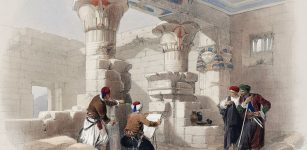 Egyptian Artisans In The Valley Of The Kings Had Permanent Jobs In The Time Of The Pharaohs
Featured Stories | Apr 11, 2022
Egyptian Artisans In The Valley Of The Kings Had Permanent Jobs In The Time Of The Pharaohs
Featured Stories | Apr 11, 2022 -
 2,000-year-Old Uluburun Shipwreck Reveal Complex Trade Network
Archaeology | Nov 30, 2022
2,000-year-Old Uluburun Shipwreck Reveal Complex Trade Network
Archaeology | Nov 30, 2022 -
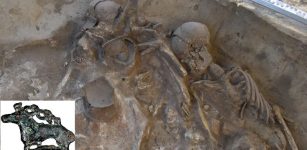 2,000-Year-Old Tumulus Of Unknown Culture Discovered In Siberia – Who Were These People?
Archaeology | Jan 4, 2023
2,000-Year-Old Tumulus Of Unknown Culture Discovered In Siberia – Who Were These People?
Archaeology | Jan 4, 2023 -
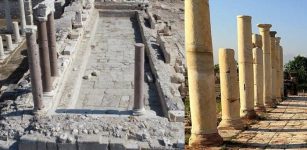 Massive 2nd-Century Fountain In Turkey’s Ancient City Of Tripolis Will Be Soon Restored
Archaeology | Aug 3, 2020
Massive 2nd-Century Fountain In Turkey’s Ancient City Of Tripolis Will Be Soon Restored
Archaeology | Aug 3, 2020 -
 Early Humans Were Probably Driven To Extinction By Climate Change- Study Suggests
Civilizations | Oct 15, 2020
Early Humans Were Probably Driven To Extinction By Climate Change- Study Suggests
Civilizations | Oct 15, 2020 -
 Child’s Play: Are Tibetan Hand And Foot Traces The Earliest Example Of Parietal Art?
Archaeology | Sep 18, 2021
Child’s Play: Are Tibetan Hand And Foot Traces The Earliest Example Of Parietal Art?
Archaeology | Sep 18, 2021 -
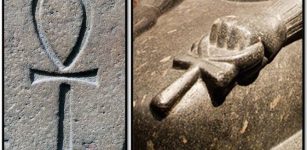 Secrets Of The Egyptian Ankh Cross And Its Energy Properties Revealed
Ancient Symbols | Feb 13, 2020
Secrets Of The Egyptian Ankh Cross And Its Energy Properties Revealed
Ancient Symbols | Feb 13, 2020 -
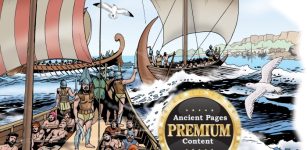 The Carthaginians’ Secret: Mysterious Desert Land Or America Found By Mistake?
Featured Stories | Jul 27, 2017
The Carthaginians’ Secret: Mysterious Desert Land Or America Found By Mistake?
Featured Stories | Jul 27, 2017 -
 Asgard Walls Built By Giant Master Mason And Birth Of Magical Horse Sleipnir
Featured Stories | Apr 19, 2018
Asgard Walls Built By Giant Master Mason And Birth Of Magical Horse Sleipnir
Featured Stories | Apr 19, 2018 -
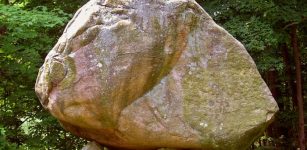 Mystery Of The Giant Boulder In North Salem
Featured Stories | Aug 8, 2019
Mystery Of The Giant Boulder In North Salem
Featured Stories | Aug 8, 2019 -
 Bizarre Devil’s Tramping Ground In North Carolina Is Avoided By People And Animals
Featured Stories | May 1, 2019
Bizarre Devil’s Tramping Ground In North Carolina Is Avoided By People And Animals
Featured Stories | May 1, 2019 -
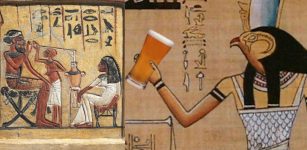 Beer Was Used As Medicine And Payment In Ancient Egypt
Ancient History Facts | Feb 11, 2018
Beer Was Used As Medicine And Payment In Ancient Egypt
Ancient History Facts | Feb 11, 2018 -
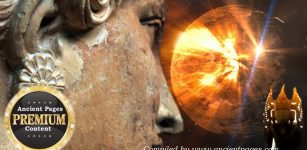 Secret Ancient Knowledge Of Venus – Ancient Gods, Giants And More Controversial Theories – Part 2
Featured Stories | Jul 2, 2018
Secret Ancient Knowledge Of Venus – Ancient Gods, Giants And More Controversial Theories – Part 2
Featured Stories | Jul 2, 2018



